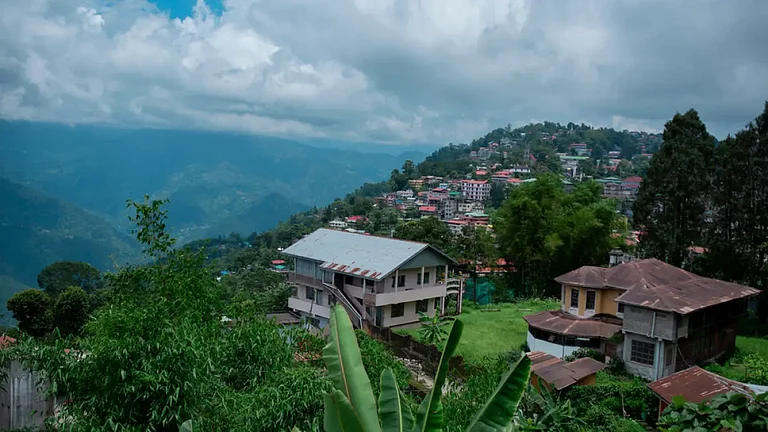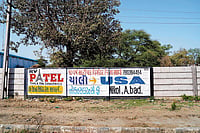
Kodaikanal in the 1970s was a pristine and tranquil hill station marked by its star-shaped lake, eucalyptus-scented air, and natural beauty under the watch of Perumal Peak — earning its title as the “Princess of Hill Stations.
The town’s heart was the Kodaikanal International School, which evolved from a missionary school to an International Baccalaureate institution under Frank Jayasinghe, attracting families and students from around the world.
Kodaikanal, once a hill station rich in wildlife, pepper cultivation, and natural beauty, has been altered by development, tourism, and environmental changes, leading to the disappearance of its flora, fauna, and old-world charm.
Gurgling brooks; a star-shaped lake; enormous Eucalyptus trees and an omnipresent Perumal Peak hovering in the background, like a sentinel overlooking the town: this was the Kodaikanal we came to in the early nineteen-seventies.
Salubrious, pristine and a few words, not yet in the lexicon, was how the tourism department described this Princess of hill stations. It was all of that!
Surrounded by grassy hills the lake, attributed to Sir Henry Vere Levinge, shimmered under a morning sun and a few rowing boats plying the waters were treated to the aromatic scent of fresh eucalyptus leaves. By the boathouse, corncobs roasting over charcoal fires – impossible to resist – and Kniphofia in profusion on the marsh, ensured clean filtered water to Levinge’s creation. Aptly named Sleepy Hollow, the abundance of red hot pokers were a sight to behold.
Kodaikanal was a sleepy town with its quaint houses and narrow roads under the benevolent gaze of Perumalmalai a few kilometres away. In the heart of the town lay the sprawling campus of The Kodaikanal International School. Many still subscribe to the theory that the town was built around the school … and it was this that magnetically appealed to us parents with young children.
Initially it was Highclerc, a mission school for American children. About the time we dreamed of settling in Kodaikanal, Frank Jayasinghe, the new principal from Sri Lanka, initiated the International Baccalaureate system … and our dream came true.
My wife Shehzarin got a job with the school and our three children got a wonderful education, which would otherwise have been impossible. Even in those days the fees were beyond our means. Children from across India and beyond found in Kodaikanal a rare blend of learning and an appreciation of a wild and beautiful landscape. They came from South Korea, Sweden, Sri Lanka and even Saudi Arabia, courtesy ARAMCO and the school soon boasted over forty nationalities: a geography lesson itself.
Kodaikanal was indeed the princess of the hills. There weren’t many tourists and those that came had cottages where they spent the summer months trekking, boating and golfing on the picturesque golf course. With all this happening in the centre of the town, to the west, vast stretches of grassland were home to myriad ruminants. From the smallest, to the largest of the bovine species; herds of Indian Gaur grazed contentedly alongside sounders of boar that dug into the soft earth for a plentiful supply of roots.
In addition to aerating the soil, wild boar kept the land free from carrion and the grasslands remained unblemished. There were trout in the streams that criss-crossed these open spaces and intrepid fishermen were rewarded with tasty fresh fish! Further afield, atop Vandaravu, the highest peak in the Palani Hills, the three-hundred-and-sixty degree panoramic view of forest below, stretches into the Pambadum Shola in Kerala. Here, the ethereal silences are only broken by the occasional sawing of leopards, interspersed by startling cries of barking deer and the crashing of falling branches pulled down by plentiful herds of elephants. An idyllic setting without any man made interference; it is now the exclusive preserve of animals. Tourists and residents are prohibited from entering this magic kingdom.
Unfortunately the same cannot be said about Tiger Shola and Bombay Shola where liquor bottles, trash and the stench of human waste are evidence of crass tourism!
There are rare sightings of Malabar Squirrels but these are obliterated by the unending menace of bonnet monkeys that have become a plague in these forests. Interestingly, there are no langurs to be seen in either of these forests!
Cultivation was plentiful. There were pear orchids within the town, which catered largely to the canning industry but it wasn’t profitable and soon made way for real estate. Villages to the north continued their cultivation of vegetables. A profusion of greens and garlic from Vilpatti, Poombarai and the upper reaches, catered to the growing appetite of neighbouring Madurai and Palani.
The lower hills produced an abundance of indigenous bananas. These hill bananas are still sought after and command a good price. Later oranges were added and more ambitious landowners started planting coffee.
Someone found that pepper could be grown alongside. The vines, climbing up shade trees took no extra space. Throwing out large catkins of the spice, it added to the smorgasbord of produce that supplemented the meagre profits of small farmers.
Black eagles soared high in the skies, their sharp eyes aiding them to pick up snakes and rodents with equal dexterity. These magnificent solitary raptors, nesting in the valleys kept their young alive with easier prey like squirrels and smaller mammals. There were no crows and peacocks were unheard of above two thousand feet. They came later, following the garbage trail. Crows are now everywhere!
There was more to follow.
Planting of Wattle on the grasslands destroyed these plentiful grazing grounds. With no alternative, gaur started wandering into the centre of town. It is reminiscent of the British colonisation of India. When the British left, myriad Indians followed and a new diaspora created in the British Isles. In the years to come Kodaikanal could well become the domain of elephants, gaur, sambar, panther and the occasional tiger!
Even before Kodaikanal declared itself a municipality, marauders, in the guise of businessmen and the benamis of politicians, made their unwelcome appearance.
The rapid growth of hotels came hand-in-glove with mushrooming religious institutions. They brought noise, chaos and an even larger influx of tourists. Loudspeakers shattered the peace and cars, bikes, tipper trucks and monstrous buses added to the mayhem.
Swamps were systematically drained and concrete filled these fresh water sources; pumping out sewage instead. The red hot pokers have long since disappeared; taking with them the charm and old way of life.
The Princess still wears her crown, but the jewels have been stolen. For us, it is time to bow out and thank her for the memories.
It’s time to say goodbye!
Minoo Avari is a retired planter who plays tennis and rides a bike.

























